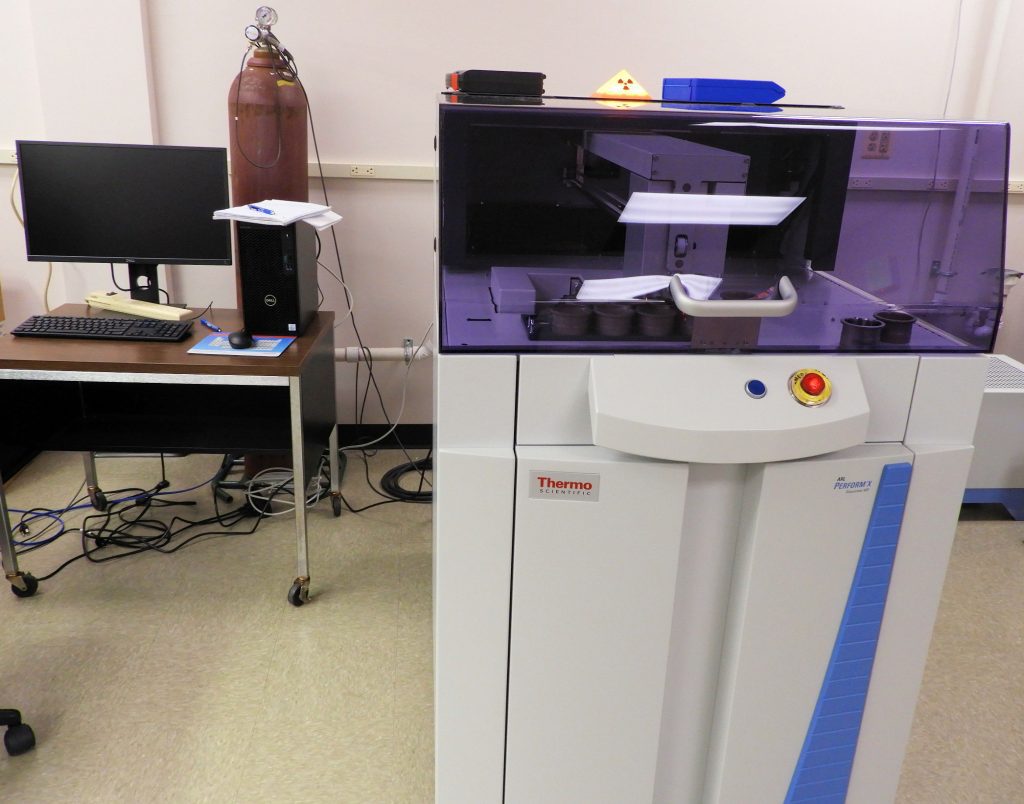Anderson Materials specializes in XRF Testing Services. Our services focus on determining the elemental composition of materials, providing precise and reliable results. We analyze solid samples, powders, and liquids to identify various elements, from fluorine to uranium, using our state-of-the-art wavelength-dispersive X-ray fluorescence spectrometer (WD-XRF).
Our XRF Testing Services
- Elemental Analysis:
- Precise Measurement: Quantitatively assess elemental concentrations from fluorine to uranium, with very low detection limits. Learn more about our ASTM standard testing using XRF and all of our ASTM testing standards.
- Versatile Sample Types: Analyze solid samples, powders, and liquids.
- Special Capabilities: Measure carbon and nitrogen in low-density solid materials and compare small spot compositions of a sample.
- Material Assessment:
- Detect Heavy Metals: Measure low concentrations of heavy metals such as lead, cadmium, mercury, gold, silver, platinum, uranium, and chromium.
- Analyze Metal Alloys: Perform accurate identification of metal alloys.
- Oil and Fuel Analysis: Measure sulfur, chlorine, barium, calcium, phosphorus, zinc, and wear materials in oils, lubricants, and diesel fuels.
- Identify inorganic fill materials in polymers, such as fiberglass, calcium carbonate, and titanium dioxide.
- Quality Control Testing:
- Ensure Purity: Analyze the purity of materials such as inorganic chemicals.
- Evaluate Safety: Assess the safety of ceramic dinner plates and other consumer products for heavy metals.
Applications for XRF Testing
- Heavy Metal Testing:
- Measure Metal Ions: Detect concentrations of lead, copper, iron, cadmium, mercury, and other metal ions in water.
- Material Degradation Analysis:
- Detect Changes: Measure the loss of zinc in brass or of chlorine in PVC due to environmental exposure.
- Identify a metal alloy
- Determine what inorganic materials are in a composite material such as a plastic, a paint, or other resin-based coatings
- Beverage Quality Control:
- Ensure Quality: Check water, sodas, wines, beers, whiskies, and liqueurs for heavy metals or elements leached from packaging.
- Oil Characterization:
- Analyze Changes: Characterize changes in motor oils with use to ensure optimal performance.
- Contaminant Detection:
- Detect Soluble Contaminants: Identify soluble surface contamination removed by solvents.
- Measure Organic Bromine Additives: Detect and measure them in polymers.
- Couple with XRD crystalline chemical phase analysis to improve the identification of complex inorganic mixtures
Contact Us
For more detailed information on our XRF Testing Services, visit our detailed page. To discuss your XRF Testing needs and benefit from our expertise, contact us today. Our team of Ph.D. scientists is ready to help improve your materials and identify potential issues.
General Inquiries: ContactUs@andersonmaterials.com or complete a form on our “Contact Us” page.

